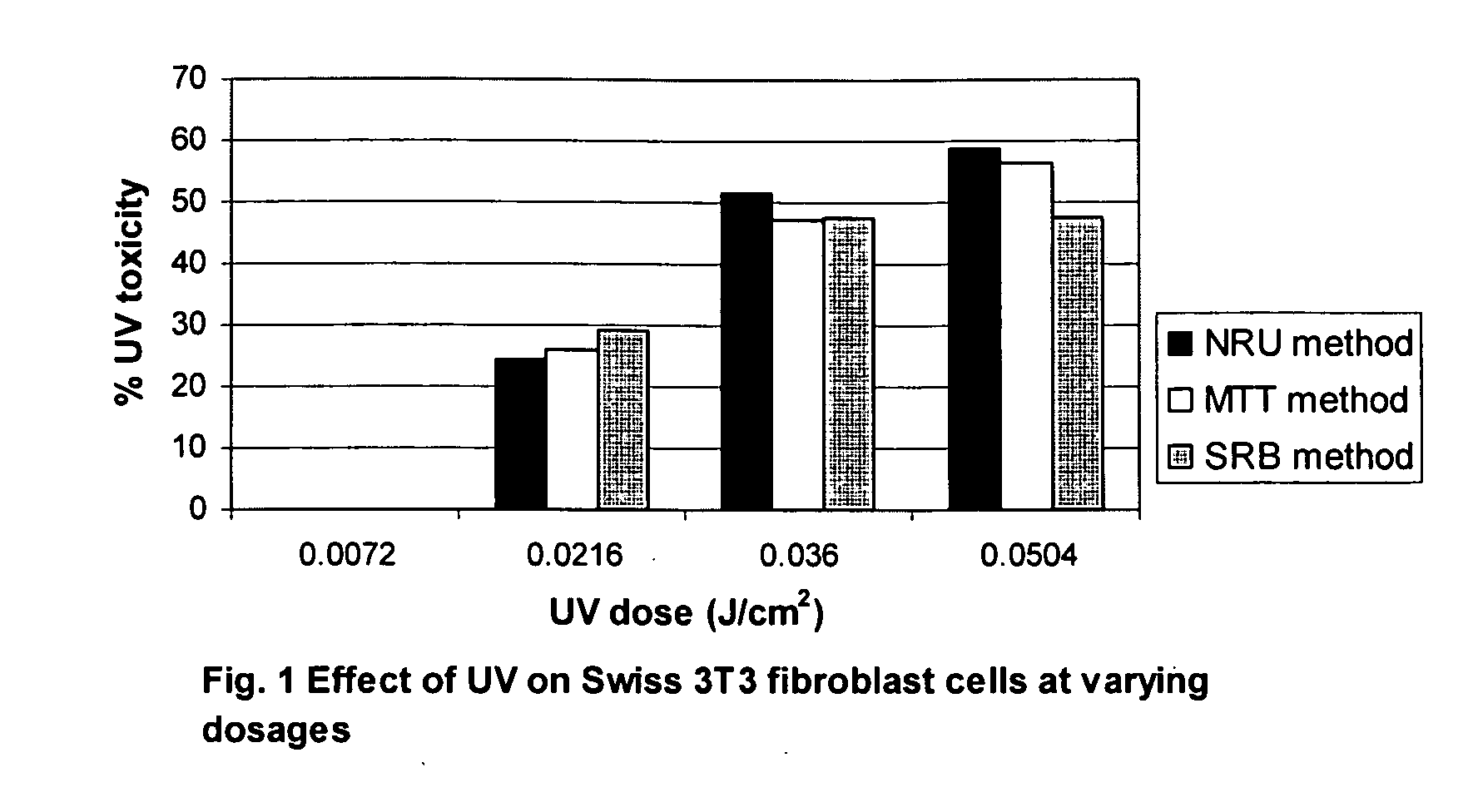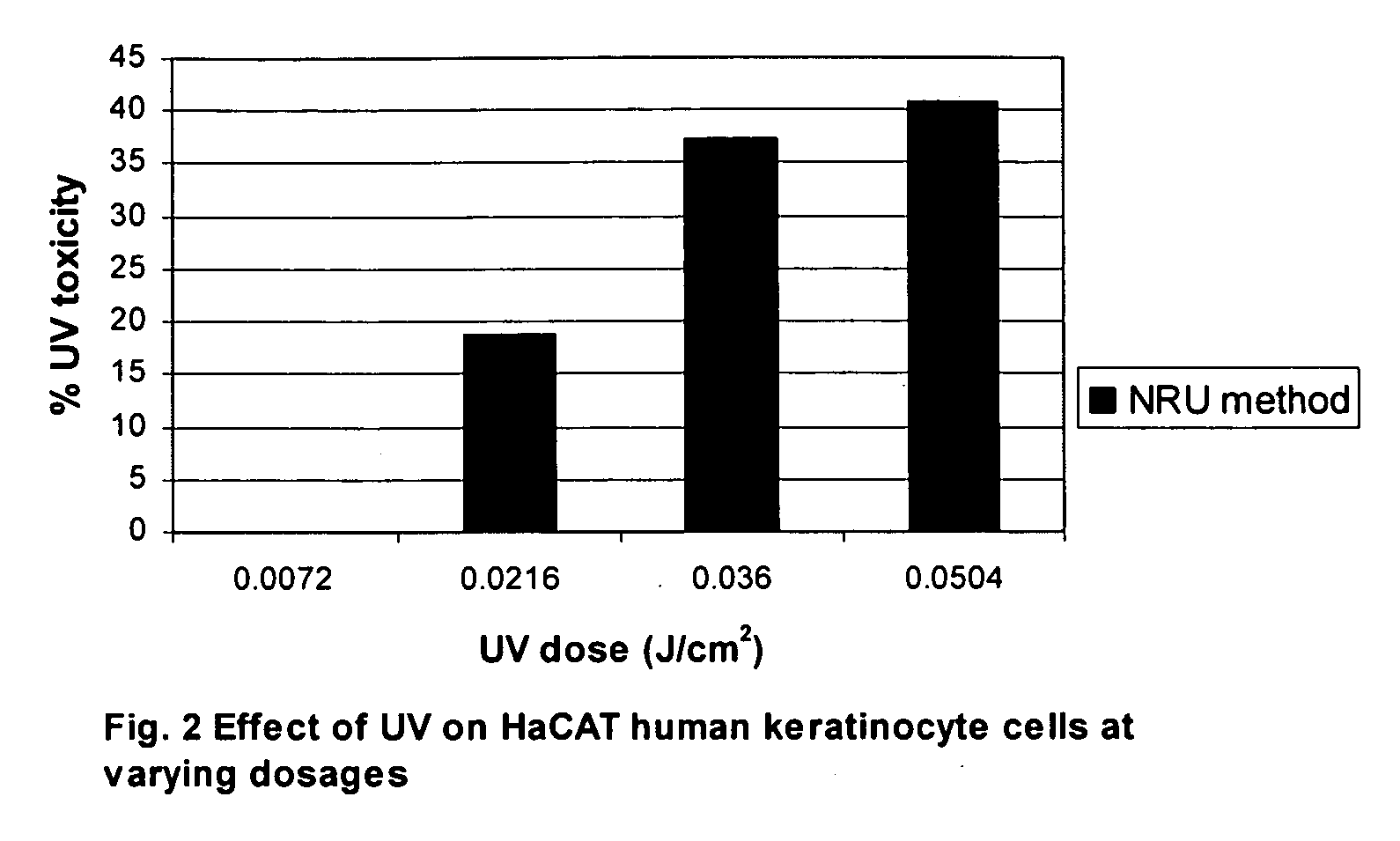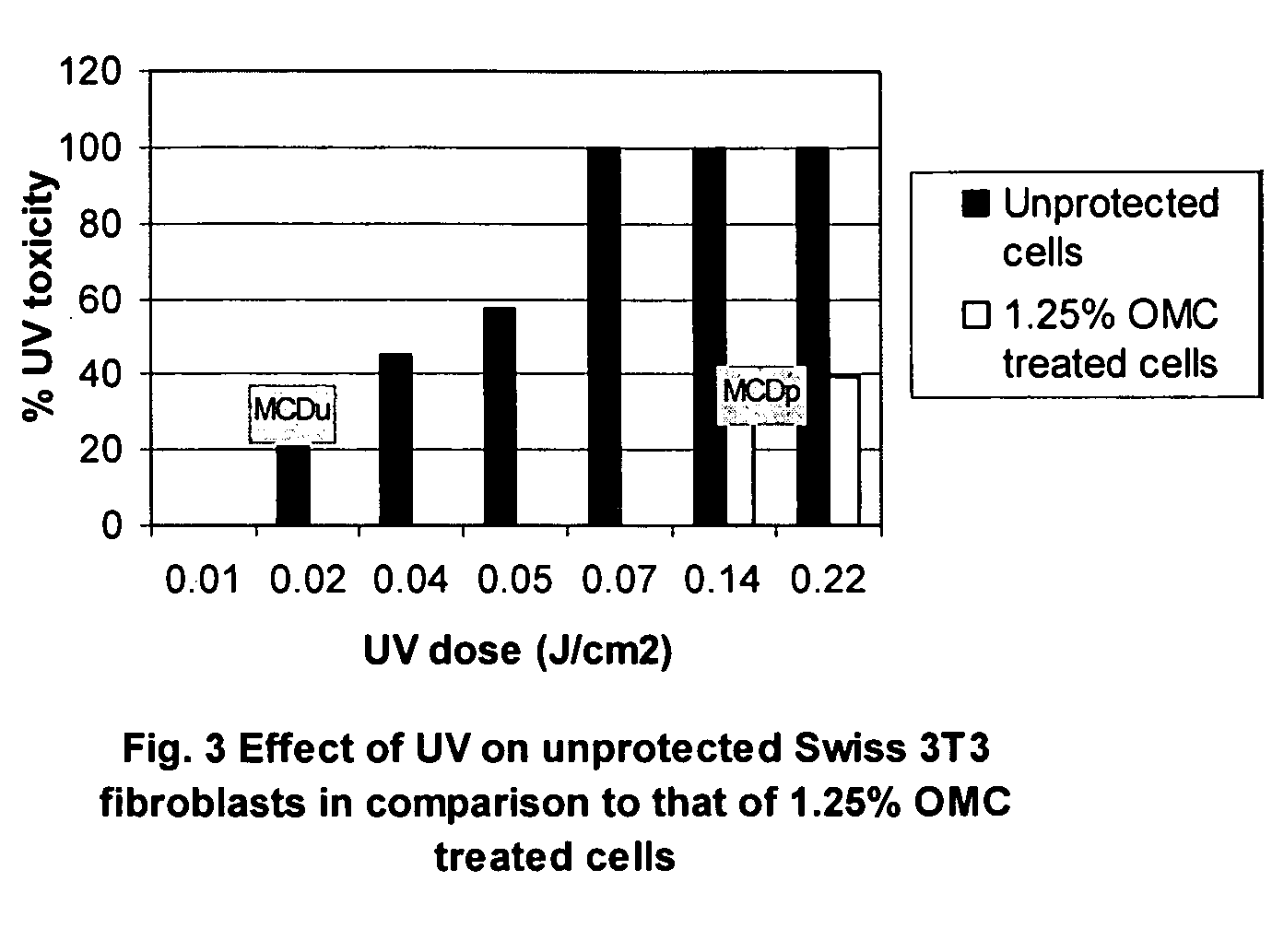UV based cell viability as an indicator of sun protection factor and methods of measurement thereof
a cell viability and sun protection factor technology, applied in the field of methods of measuring the sun protection factor, can solve the problems of higher spf values, more difficult to measure, and greater uncertainty in the final in vivo
- Summary
- Abstract
- Description
- Claims
- Application Information
AI Technical Summary
Benefits of technology
Problems solved by technology
Method used
Image
Examples
example i
Materials and Methods
[0027]Cell Cultures
[0028]Swiss 3T3 Mouse fibroblast cells and HaCAT Human keratinocytes were obtained from ATCC and cultured in DMEM medium supplemented with 10% FBS. The confluent cultures are harvested by trypsinization and expanded during two more passages before they were used for the experiments. Medium and other culture components were renewed after 48-72 h. All cell cultures were maintained in a humidified atmosphere at 37° C. in 95% air and 5% CO2.
[0029]UV Source
[0030]UV lamp of 14.7 W, 0.3 A, 55V with an intensity of 33.3 μW / cm2 from Sankyo Denki Co., Ltd.
[0031]Cell Staining Techniques
[0032]Sulphorhodamine B (SRB) staining: SRB was purchased from Sigma. The dye was dissolved in 1% acetic acid at a concentration of 400 mg / 100 ml. SRB dye is stable for months at RT. The SRB assay is used for cell density determination, based on the measurement of cellular protein content. The method described here has been optimized for the toxicity screening of compounds...
PUM
 Login to View More
Login to View More Abstract
Description
Claims
Application Information
 Login to View More
Login to View More - R&D
- Intellectual Property
- Life Sciences
- Materials
- Tech Scout
- Unparalleled Data Quality
- Higher Quality Content
- 60% Fewer Hallucinations
Browse by: Latest US Patents, China's latest patents, Technical Efficacy Thesaurus, Application Domain, Technology Topic, Popular Technical Reports.
© 2025 PatSnap. All rights reserved.Legal|Privacy policy|Modern Slavery Act Transparency Statement|Sitemap|About US| Contact US: help@patsnap.com



